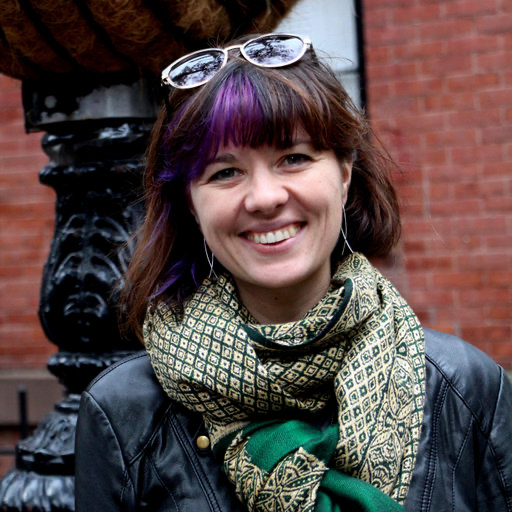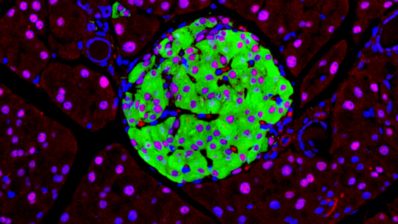In recent times it has become painfully clear that the environment (“nurture”) we find ourselves in greatly impacts our mental well-being – but the way it impacts can depend on our genetic makeup (“nature”), with some people being more susceptible than others.
YOUTH-GEMs, a 5-year EU project (Horizon Europe, 8 107 980.00 EUR maximum grant amount), aims to decipher this “gene-environment interaction” during adolescence – the most critical period, with more than 75% of the people who experience mental health issues, doing so before they turn 24.
The project is a collaboration of 18 partners, from Spain, Ireland, the UK, the Netherlands, Estonia, Croatia, Serbia, Germany, Italy, and Australia. Importantly, it includes the voice of young people themselves.
“It’s incredible to think that such a big and experienced group of researchers and medical professionals is interested in what young people have to say. You can really feel the connection between people who are passionate about mental health and are using resources as a group with the ultimate goal of bettering the mental health area experience of young people in the near future. I felt welcomed and listened to.”
Inês (23 years old), member of Euro Youth Mental Health
The international consortium behind the project met in mid-October at the Barcelona Biomedical Research Park (PRBB) for their annual research meeting. We talk to Lauren Fromont, Scientific Programme Manager at the CRG, who leads the “Data management” work package of the project.

What is the aim of the project?
The YOUTH-GEMs project studies the genetic & environmental factors influencing the mental health trajectories of young people between 12-24 years. Through self-awareness, early detection and -if needed- interventions, we hope to prevent or alleviate mental distress.
When you say ‘mental health’, what do you mean? Are we talking about psychiatric disorders, or also burnout, anxiety,…?
In this project, we are considering mental health at large, as a state of mental well-being that enables us to cope with life events. Any young people who turns up at a primary care instituton member of the consortium and reporting a mental health issue will be considered to participate in this study.
Why focus in particular on people 12-24?
There are several motivations for this. There is, of course, a societal one: one in seven young person declares experiencing mental health issues, according to the WHO (Wolrd Health Organisation). The Covid-19 pandemic made it worse… These are alarming numbers. Yet we cannot simply apply what we know from adults to young people, for the environmental, social conditions are very different, and the biology as well. It is during young adulthood that the brain develops rapidly and is still highly “plastic”. Unfortunately, we don’t yet know how exactly the brain changes, which brain cells are affected, and which factors can prevent mental illness or even drive illness.
We focus on young people 12-24 because during young adulthood the brain develops rapidly, and many genetic and environmental factors can affect mental health.
You look at the interaction gene-environment; do we know the relative weight of each in mental health illness?
What we know is that neurodevelopment is a dynamic process that results from a constant interplay between genes and environment (and, if I may, “chance”). We have some leads for severe disorders, for example drug use interacting with a polymorphism in the AKT1 gene in the development of psychosis, or interactions between the serotonin transporter gene and childhood maltreatment in the development of persistent depressive disorder. But the evidence gathered so far must be taken with a pinch of salt: we need to be able to reproduce it and test it with more data. Our project, however, is not targeting risks for specific diseases, but rather the evolution of mental health over time.
And how are you planning to study this?
The strength of the project is that it approaches this issue from many angles. We are re-using existing data to train AI predictive models, and then we will collect longitudinal data with 1000 individuals in Europe, and another 1000 in Australia. This data will be used to perfect the models and provide — hopefully — a better understanding of mental health trajectories. Young individuals that are seeking help for the first time will be offered to participate. A subset of 100 participants will also be using an app, co-created with young experts with lived experience in mental health, that will help tracking more variables, from social interactions to mobility. Finally, we will also analyse brain cells from people who have passed away and culture human brain cells in the lab.
When you deal with susceptible data such as this it’s especially important to be careful with ethical, privacy, and security issues. How do you deal with these?
We are deadling with extremely sensitive data. It would not only be possible to identify individuals, but, in the case of genetic data, their whole genealogy! At the European Genome-phenome Archive (EGA), our mission is to keep the data secure while allowing to share only as much as needed for the good of society. It is a fine line we must walk to navigate this ethical dilemma… Thankfully, we can rely on European regulations, such as GDPR, and the project counts with an ethical advisor from Maastricht University. Of course, each participant provides an informed consent for their data to be used in the project, and also be made available for secondary use under specific conditions.
Our goal in EGA, and for this project, is to keep the data secure while allowing to share only as much as needed for the good of society.
I guess you need a lot of different expertise…
A lot: AI scientists, people with digital technology expertise, clinical researchers, mental health experts, people experiencing mental illnesses, biomedical ethicists, social scientists, ethical and legal experts will work together to make sure the app meets the needs and expectations of everyone involved.
We will also focus on making the app fair, non-discriminatory, transparent, and easy to understand. We want to create a tool that is safe and ethical for all adolescents to use, and that follows all relevant laws and regulations.
What is your particular role?
Like all EU-funded large research projects the project is divided into different subtasks called work packages, led by a designated project partner.
I am in charge of the Data Management work package – this package aims to ensure that data comply to the FAIR (Findable-Accessible-Interoperable-Reusable) principles. Using the expertise from the European Genome-phenome Archive, I am coordinating groups to make and apply decisions to that respect. It is easier said than done! Thankfully, we have a wonderful team of clinical data curators (Aldar Cabrelles and Marta Huertas) who actively participate in this task. I will also ensure that the data are made discoverable to the research community (while keeping the personal and sensitive information secure). All of those tasks will be useful for the project, but also aim to ensure sustainability and replicability of the research performed in Youth-GEMs.
What specific difficulties related to data management has this project?
One specific outcome of data management is the production of a data model, which is basically a set of rules and definitions the data organisation must follow; this is an essential step to making data interoperable. But in this project, it brings two challenges. First, the ambition of the project to gather many different data types is what also makes it difficult to manage. We have data collected via questionnaires, from phones, as well as genomic data and environmental data, not to mention electronic health records… many of which are even in different languages! Finding a one-fits-all solution is an impossible task, but we’ll aim to produce a data model that covers most of it. Second, there is little norms out there to follow in the field of mental health. So, we’ll probably have to be creative and offer an initial solution.
What were the highlights of the annual meeting you had at the PRBB?
We had two days filled with updates, discussions and next steps from the various work packages. Young Experts were present to ask questions, enrich discussions and provide feedback. They also coordinated a workshop to train the partners on citizen science.
As we finished year 1 of the project, we see that the necessary preparations on data-management, defining useful cohorts and the first steps in developing clinical and e-health tools took place. We are really looking forward to the next year resulting in first ideas for publications, questionnaires and hopefully interesting preliminary findings.







